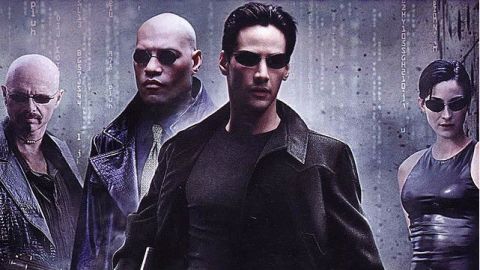Extreme Learning, Matrix-Style

What’s the Big Idea?
We all recall the scene from the Matrix when Neo (the “chosen-one”) gets wired to a computer and in a matter of milliseconds is programmed into a Kung Fu master. Learning by osmosis — or download — is an irresistible idea, but physicists like Dr. Michio Kaku say it’s not likely to happen any time soon, despite our advancements in science and technology. Due to evolutionary constraints of the human body, Matrix-style learning is still centuries away from becoming feasible in practice, not just in theory.
Five Technologies That Will Change the Way We Learn
If you’re like me, this news may have shattered some old karate dreams, but it does not negate the fact that technology has enabled us to acquire information and skills more quickly and easily than ever. Today, web-based technologies can give us all the information we need in milliseconds. We can’t program the internet into our brains, of course, but the speed at which we can now access this content vaguely embodies the futuristic vision set forth by the Wachowski brothers.
Thanks to technology, anyone can learn anything from anywhere. The barriers that once segregated learning from leisure are being dismantled, as education becomes more than something that occurs in the halls of our classrooms and libraries. All of this has (rightly) prompted discussions about technology’s role in our education system.
Professor Curtis Bonk and his team at the Instructional Systems Technology Department at Indiana University have been on the forefront of these discussions. Bonk argues, “When we can have the equivalent of the Library of Alexandria in our pockets on an inexpensive flash drive, we must begin to question exactly what should be taught and ultimately what knowledge is.” He says that the purpose of education has “swiftly pivoted from knowing what something is to knowing how to find out about that thing.” He advocates the importance of “learning how technology, when thoughtfully integrated, can assist in efforts to seek, find, and filter knowledge that is appropriate and timely.”
This conviction has inspired Bonk and his associates to study how others have used technology in novel, unusual, or nontraditional ways for the purpose of learning — including learning at various locations such as a park, plane, train, subway, boat, or car.
Fittingly, they call this type of web-based learning extreme learning and identify it as a means for “blending physical and digital learning environments.” The extreme learning website offers access to a variety of recent conference papers written by the research team as well as other online resources that help further explain why web-based learning is so important and how it can help you learn more efficiently.
What’s the Significance?
While we as a species we may be centuries away from becoming theoretically capable of learning a skill with the simple press of a button, we can, in Professor Bonk’s mind, at least compensate for such evolutionary shortcomings by learning more about knowledge-based technologies and utilizing their limitless capabilities.





